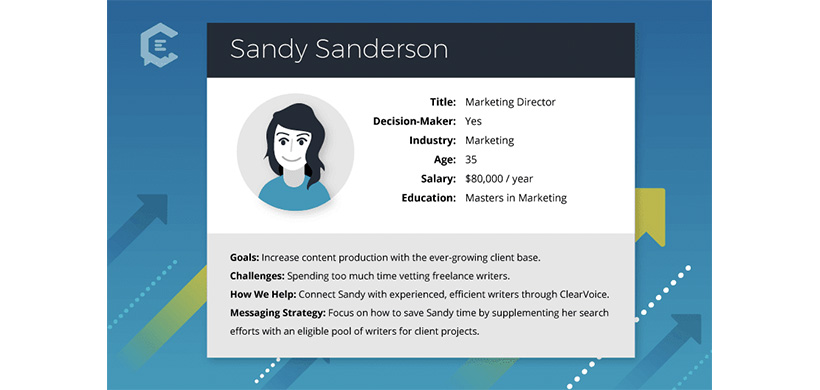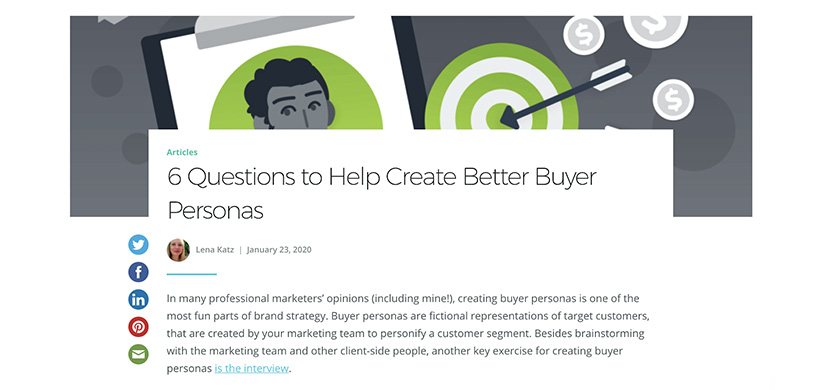What is pillar content? Pillar content is a niche-focused content series. Content pillars include a comprehensive top page or asset that offers an in-depth overview of a broad theme or topic. From this authoritative long-form piece, offshoots are created as sub-pages that link back to the pillar page. Pillar content is the sixth level of the content marketing hierarchy.
Pillar content. The phrase strikes fear into the hearts of many content marketers and creators — those who went all in and failed to make the impact they assumed would happen after slaving over a long-form, authoritative piece.
Others are intimidated and shy away from the heavy-lifting of creating pillar pages. Others don’t have the time or energy to tackle them, mostly because they don’t see the value. And then there is another select group of content marketers who are marveling at the performance of their pillar content and producing their next big hit as we speak.
We’ve gone pretty far down the content rabbit hole, otherwise known as the content marketing hierarchy. If you’re new to nerding out with us on the content hierarchy, we suggest you begin your journey by understanding the definition of all 11 content levels.
Next, you’ll want to move through the entire list below and read all about the previous content levels we covered — core content (#1), vertical content (#2), content hub (#3), content franchise (#4), and content campaigns (#5). Then, you’re ready to dig into #6… DUN, DUN, DUN… pillar content.
You’re here because you’re looking for a way to rise through the ranks, build quality backlinks, and improve engagement. What you really need to do is focus on establishing your brand as an authority by producing top-notch pillar content.

What is pillar content?
Pillar content is a niche-focused content series. Content pillars include a comprehensive top page or asset that offers an in-depth overview of a broad theme or topic. From this authoritative long-form piece, offshoots are created as sub-pages that link back to the pillar page. Pillar content is the sixth level of the content marketing hierarchy.
Content pillars are highly effective for link-building and improving content ranking. Because topics are built around a specific set of search terms for the pillar page and supporting pages, this structure creates a web of relevancy, establishing your brand as an authority on that topic or theme.
When you’re selecting a content creator for pillar content, go with a seasoned multi-talented writer. Make sure this writer knows the topic well, has a solid handle on SEO best practices, and understands how to structure the page appropriately.
An important (and exhausting) sidenote… pillar content has many name variations. Topic clusters, spokes-and-wheels, pillar pages, pillar posts, pillar blogs, content bundles, content series, cornerstone content, parent posts, content hubs, and core content.
What pillar content is not
Because there are so many synonymous terms for pillar content, confusion inevitably happens. Two synonymous terms are content hubs and core content. In the case of our content marketing hierarchy, pillar content is neither of these terms. Allow me to explain…
Content hubs
Content hubs are the third content level, much higher up in the brand hierarchy. A content hub is an organized collection of content, like a resource center or a company blog. Pillars cover specific topics, while content hubs cover a broad range of topic categories — and house pillars.
Core content
Core content is the first content level in the brand hierarchy. This messaging communicates business value and supports business goals, like a mission or vision statement. Marketers commonly refer to their most important brand content (vision statement) as “pillar content” and pillar content (how-to guide) as “core content.”
Confusing, right? If you compare a vision statement (core) to a how-to guide (pillar), you can see a major difference contextually. Just make sure everyone involved in content creation understands the foundational nuances of these content levels.
How does pillar content work?
Let’s not kid ourselves… what Google thinks matters. When Google thinks your content is valuable, you are rightfully rewarded. Each year, Google makes hundreds of changes to search — perpetually keeping content marketers on our toes.
The good news is that Google continues to reward those of us who are producing good content. Even if you’re a startup or marketing team with a shoestring budget, you still have a fighting chance. Pillar content is that chance to wave at Google and say: “Looky here, Google. We’re an authority on this topic and people value what we bring to the table.”
Here’s the deal. Longreads of 3000+ words get x3 more traffic, x4 more shares, and x3.5 more backlinks than articles of average length (901-1200 words). Meaning, content pillars offer a wealth of opportunities to make an impact.
Rankings
Between your pillar page and your supporting sub-pages, you’re providing the best answers to an entire web of queries. When you are the topic authority for multiple search queries, your brand will rise in the search ranks — likely, above your competitors.
Link-building
Link-building is another benefit. Because your pillar and sub-pages are masterfully interlinked, your internal linking structure is happily optimized. If your pillar content is useful to others, the external links will come in droves.
Engagement
High shareability is yet another way your pillar content makes a bigger splash than a shorter, one-off piece. From a conversion perspective, it’s the same old song and dance. If you demonstrate that you are the expert, people will take notice when they are searching for a solution.
2 Pillar page examples from content-savvy brands
Being content-savvy is what separates high-performing pillar pages from the rest. You don’t want to attempt pillar content… you want to own it and rock it. So, take note of these pillar page examples.
1. Pillar blog example by ClearVoice
How to Use Buyer Personas to Create Character-Driven Content is a pillar page I wrote for ClearVoice many moons ago. It didn’t start out as a pillar in 2017, but it quickly became one as ClearVoice often referred brands and freelancers to the piece for educational purposes.
Today it ranks No. 1 for several search terms because many other content creators and marketers needed to figure out how in the hell to develop B2B marketing personas. We answered their queries with this pillar blog post. 
Because this buyer personas piece is evergreen content that performs well, I did a content refresh in 2019. You’ll notice that this piece is much more than a blog post from a length and structural perspective, and it also includes persona templates (visual assets) like the one above.
Sub-topics that link back to this pillar include:
- How Personalized Video Marketing Creates Meaningful Experiences
- 6 Questions to Help Create Better Buyer Personas

2. Pillar video content example by GaryVee
You either love GaryVee (aka Gary Vaynerchuk) or you don’t. Whatever your opinion may be, GaryVee is a prolific content creator. The amount of content he has produced over the years is staggering. Guess what The GaryVee Content Model is? Ding-ding-ding… it’s pillar content.
“Think of pillar content as one long-form video/audio show from which all other content is derived.” GaryVee starts with a piece of pillar content, usually a vlog, Q&A session, or a keynote. He then repurposes and expands upon that pillar with “micro-content.”
If you take a look at this long-form 43-minute video, How to Make Your Creative Work Harder, your mind can’t help but think of all the micro content that would stem from this conversation — a great quote that is released on multiple social channels or one of GaryVee’s answers turned into a shorter vlog, blog post… or both.
Pillar content offers plenty of possibilities and plenty of space to make progress. When you factor in the growth benefits of pillar pages, you might wonder why you’ve created so much scattered content thus far.
Diversifying your content strategy is always a good move… just make sure this content level is a star player on your team.



